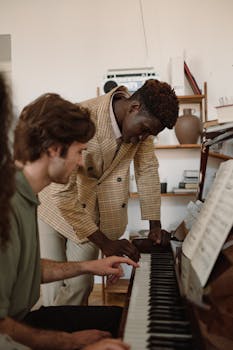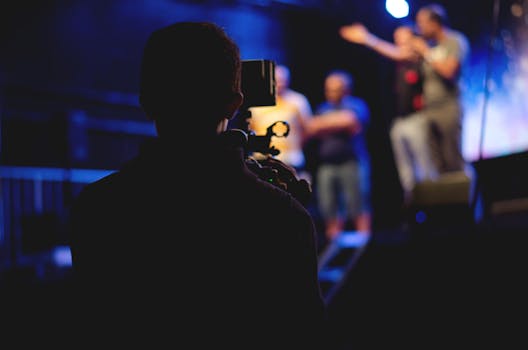As technology reshapes the way we create, consume, and share music, music communities are evolving rapidly. These changes present both challenges and opportunities for artists and fans alike. Understanding how these communities can thrive in the digital age is vital to ensuring a vibrant future for music.
Music communities have always played a crucial role in supporting artists and fostering deep connections among fans. From local scenes to global platforms, these networks serve as a foundation for creativity and collaboration. As we look ahead, it’s essential to explore the various aspects that will influence these communities.
This article delves into the future of music communities in the United States, with a focus on technological advancements, the shifting landscape of fan engagement, and the impact of social media. By examining these factors, we can better understand the dynamics shaping the music world.
The Role of Technology in Music Communities
Innovation is at the heart of every major shift in the music industry. Emerging technologies are revolutionizing how artists produce and distribute their music. Artists can now reach global audiences without the constraints of traditional labels.
Streaming services have transformed the music landscape, creating both opportunities and challenges. While artists gain exposure, they often face hurdles in monetizing their work effectively. Consequently, fresh approaches to revenue generation are emerging.
Virtual reality (VR) and augmented reality (AR) are now being integrated into live music experiences. These technologies promise immersive environments that can enhance fan engagement and provide unique performance experiences.
The rise of artificial intelligence (AI) also plays a crucial role in transforming music creation. AI tools can help musicians collaborate, produce, and experiment with new sounds, fostering collaboration across boundaries.
Moreover, technology enables unprecedented networking opportunities for musicians. Platforms aimed at collaboration can connect artists with like-minded individuals, creating a more diverse and dynamic environment for innovation.
The Shifting Landscape of Fan Engagement
As music consumption habits evolve, so do the expectations of fans. Today’s audiences crave deeper connections with artists, seeking authentic interactions over mere transactional relationships. This desire fuels changes in how musicians engage with their fanbases.
Social media platforms serve as vital channels for musicians to communicate directly with fans. Artists can share personal stories, engage in real-time conversations, and build communities anchored in shared experiences. This fosters loyalty and encourages active participation.
Live streaming concerts have also gained popularity, offering fans opportunities to connect from anywhere globally. These virtual events can create a sense of inclusivity and give musicians a platform to reach previously unreachable audiences.
Unique merchandise offerings and fan subscription models, such as Patreon, have reshaped how artists monetize their work. By providing special content and experiences, musicians can cultivate stronger ties with their most passionate supporters.
Moreover, community-driven initiatives are becoming the norm. Collaborations amongst fans and artists help strengthen the sense of belonging, ultimately enriching the music community as a whole.
The Impact of Social Media on Music Communities
In recent years, social media has emerged as a powerful tool for artists and fans alike. Platforms like TikTok, Instagram, and Twitter have dramatically altered the music discovery process. Music communities are now largely cultivated on these very platforms.
Viral challenges, trends, and memes can propel lesser-known artists to global stardom overnight. These phenomena illustrate how quickly a song can gain traction, highlighting the importance of sharing and discovery in the music world.
Social media also allows fans to play a more active role in shaping an artist’s journey. Supporters can directly influence song choices, visuals, and even the direction of a musician’s brand through their engagement.
As music platforms integrate more social features, fans and artists can interact in novel ways. This evolution is priming a more interactive atmosphere that nurtures community-building initiatives.
However, the immense connectivity brought by social media also poses challenges. It may dilute the authenticity of interactions, leading to oversaturation and diminishing the uniqueness of artists’ voices. Balancing these dynamics is essential.
The Power of Local Music Scenes
While technology and social media reign supreme, local music scenes remain vital. These grassroots communities foster authentic connections, nurturing local talent and dedicated fan bases. They provide spaces for experimentation and collaboration, ultimately shaping more personalized music experiences.
Small venues play an essential role in supporting emerging artists. These environments offer musicians a platform to connect with their audience in intimate settings. Such venues can significantly impact an artist’s journey.
Moreover, local music festivals and events serve to unify communities. These gatherings create shared experiences for fans, encouraging social interaction and support for local talent. As communities come together, they cultivate a unique musical identity.
Collaborations between local artists can also increase their visibility. By working together, musicians can enrich their creative processes and expand their reach within and beyond their immediate networks.
Investing in local industries ultimately benefits the larger music ecosystem. When local artists thrive, they contribute to the enrichment of the cultural tapestry, influencing trends and driving innovation on a broader scale.
The Role of Diversity and Inclusion in Music
Diversity and inclusion are crucial facets of music communities, ensuring diverse perspectives and voices are represented. The future of music depends on elevating underrepresented artists and communities to create a more equitable industry.
Inclusion initiatives and representation in music lead to richer storytelling and varied musical genres. Diverse artists can bring fresh ideas and sounds to the table, pushing boundaries and fostering innovation.
Community support plays a vital role; initiatives aimed at promoting marginalized voices encourage engagement and inspire discussions. By amplifying underrepresented artists, these movements help foster inclusivity within the music community.
Collaborative efforts, such as partnerships with non-profit organizations, can further enhance access to opportunities for diverse musicians. These initiatives can pave the path for all artists to thrive, irrespective of their background.
Ultimately, diverse music communities enrich the cultural fabric, providing varied experiences for listeners and contributing to a more open-minded society. By championing inclusivity, the music industry can achieve a brighter future.
The Impact of Music Education on Communities
Music education is a cornerstone of vibrant music communities. Access to quality music programs fosters the development of young talent and cultivates a love for music that lasts a lifetime. Investing in music education ultimately strengthens community ties.
School programs and community initiatives present opportunities for children and adults to explore their musical interests. These programs help build foundational skills and foster creativity, encouraging exploration and collaboration.
Additionally, public workshops and music camps can create spaces for marginalized communities, ensuring everyone has the chance to engage with music. Providing these opportunities nurtures talent while broadening horizons.
Moreover, fostering connections between music educators and local artists can create mentorship opportunities. This guidance is invaluable in helping emerging artists navigate their careers while also strengthening community bonds.
Incorporating diverse musical traditions into educational programs is crucial as well. This practice instills a sense of cultural appreciation and understanding among students, further enriching the music community.
Conclusion
The future of music communities in the United States is poised for transformation, driven by technology and evolving fan engagement. Understanding these changes will help strengthen connections among artists and their listeners.
As we embrace diversity and prioritize music education, we create a more inclusive and robust landscape. Encouraging local scenes and fostering artist collaborations enhances creativity and innovation.
With a commitment to maintaining authentic interactions in a digital world, we can build resilient music communities that thrive. The future of music holds immense potential, shaping the cultural landscape for generations.


